Galería de imágenes
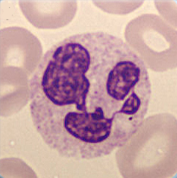
Cell description:
Size: 12-15 µm
Nucleus: clumped chromatin and mostly divided into 2-5 distinct segments connected with filaments
Cytoplasm: acidophilic with many fine reddish granules spread evenly Function: phagocytosis, play an important role in the unspecific immune defense, in the tissue they defend the mucosa against bacteria and fungi
<p>Cell description: </p> <p>Size: 12-15 µm </p> <p>Nucleus: clumped chromatin and mostly divided into 2-5 distinct segments connected with filaments </p> <p>Cytoplasm: acidophilic with many fine reddish granules spread evenly Function: phagocytosis, play an important role in the unspecific immune defense, in the tissue they defend the mucosa against bacteria and fungi</p>
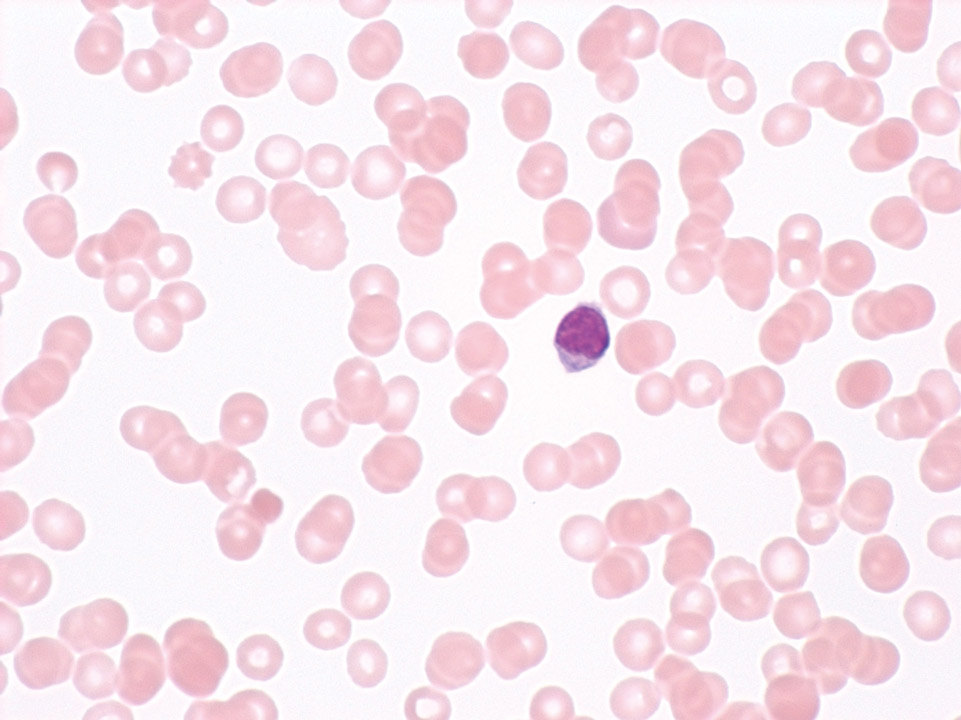
White blood cells 600/μL, granulocytes 10% (absolute: 60/μL), haemoglobin concentration 6 g/dL and platelets 10,000/μL. Diagnosis: severe aplastic anaemia. Monitoring before stem cell transplantation.
<p>White blood cells 600/μL, granulocytes 10% (absolute: 60/μL), haemoglobin concentration 6 g/dL and platelets 10,000/μL. Diagnosis: severe aplastic anaemia. Monitoring before stem cell transplantation.</p>
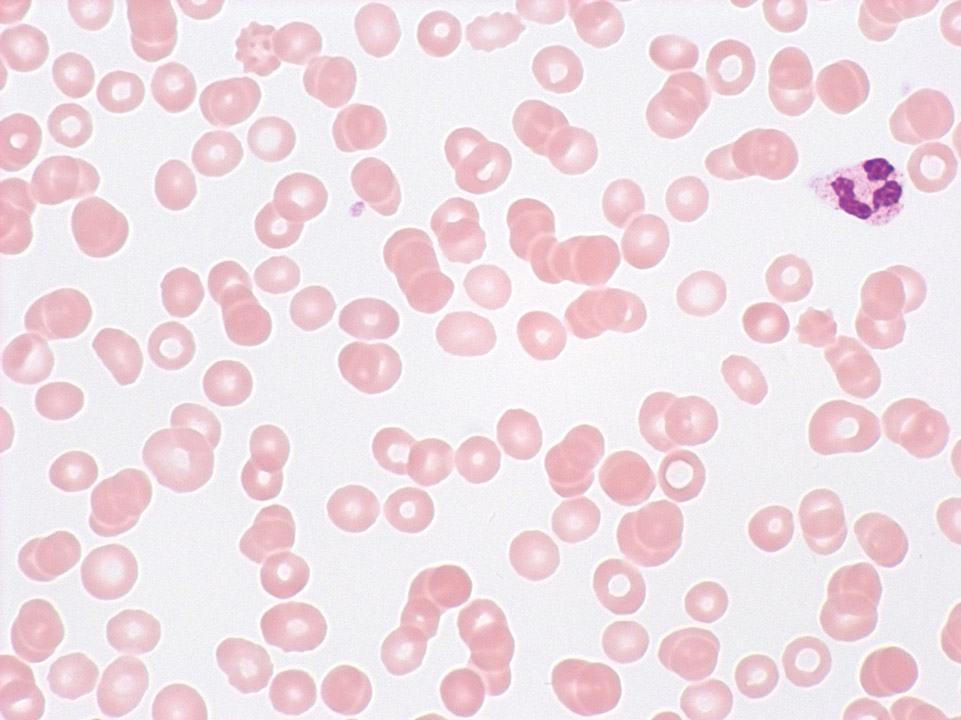
In severe anaemia (here severe aplastic anaemia with a haemoglobin concentration of 4.8 g/dL) or in erythrocytosis with a haematocrit above 50% it is difficult to prepare a proper blood film, with the blood film being either too thin (anaemia) or too thick. In cases of erythrocytosis it might be necessary to dilute the blood sample beforehand.
<p>In severe anaemia (here severe aplastic anaemia with a haemoglobin concentration of 4.8 g/dL) or in erythrocytosis with a haematocrit above 50% it is difficult to prepare a proper blood film, with the blood film being either too thin (anaemia) or too thick. In cases of erythrocytosis it might be necessary to dilute the blood sample beforehand.</p>
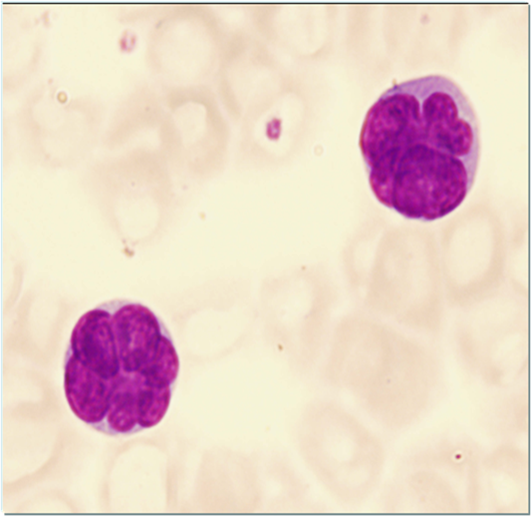
Typical for a Sézary cell is its cerebriform shape of the nucleus. The cytoplasm is usually basophilic with a medium nucleocytoplasmic ratio.
<p>Typical for a Sézary cell is its cerebriform shape of the nucleus. The cytoplasm is usually basophilic with a medium nucleocytoplasmic ratio. </p>
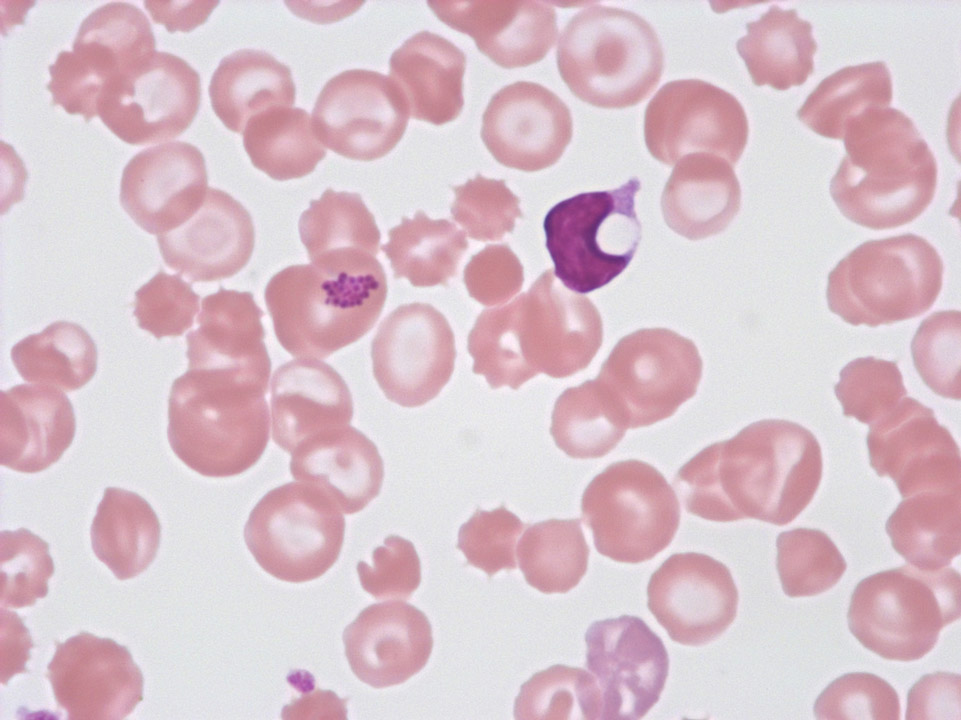
Accumulation of streptococci on a red blood cell of a patient in intensive care suffering from streptococcal septicaemia (further to the right, a lymphocyte with a cytoplasm vacuole can be seen).
<p>Accumulation of streptococci on a red blood cell of a patient in intensive care suffering from streptococcal septicaemia (further to the right, a lymphocyte with a cytoplasm vacuole can be seen).</p>
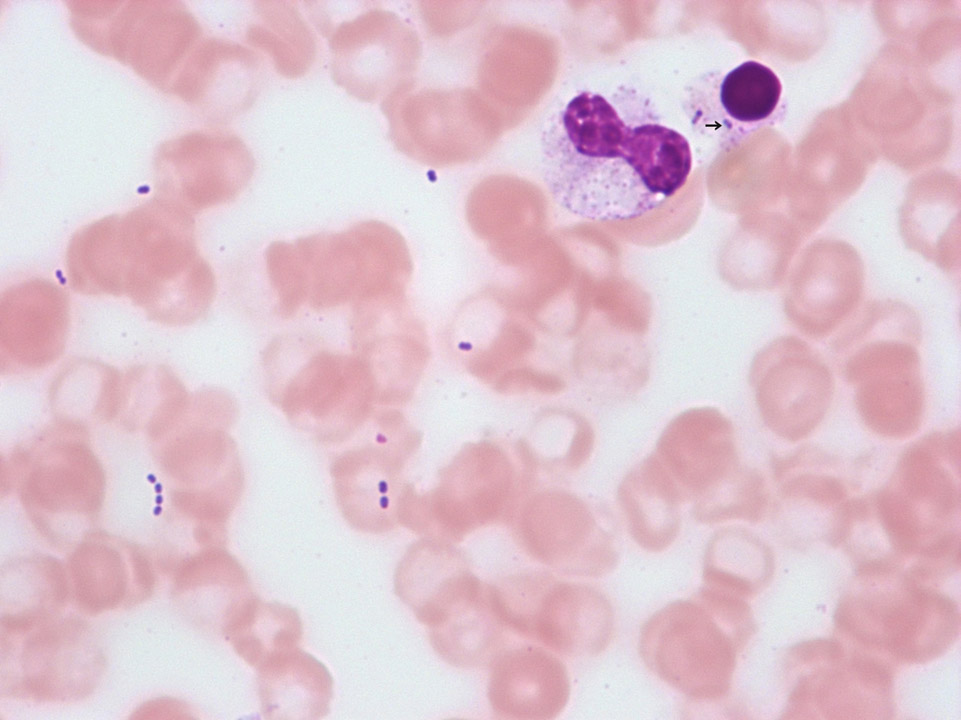
Streptococci, extracellular as well as intracellular (->), in a patient with finger gangrene. The patient died hours later despite intensive care treatment. If bacteria are detectable in a blood film, a blood film from a different patient should be stained with the same staining solution and be checked for bacteria to rule out contamination of the staining solution. If none are detectable, the detection of bacteria has to be reported to the treating physician immediately.
<p>Streptococci, extracellular as well as intracellular (->), in a patient with finger gangrene. The patient died hours later despite intensive care treatment. If bacteria are detectable in a blood film, a blood film from a different patient should be stained with the same staining solution and be checked for bacteria to rule out contamination of the staining solution. If none are detectable, the detection of bacteria has to be reported to the treating physician immediately.</p>
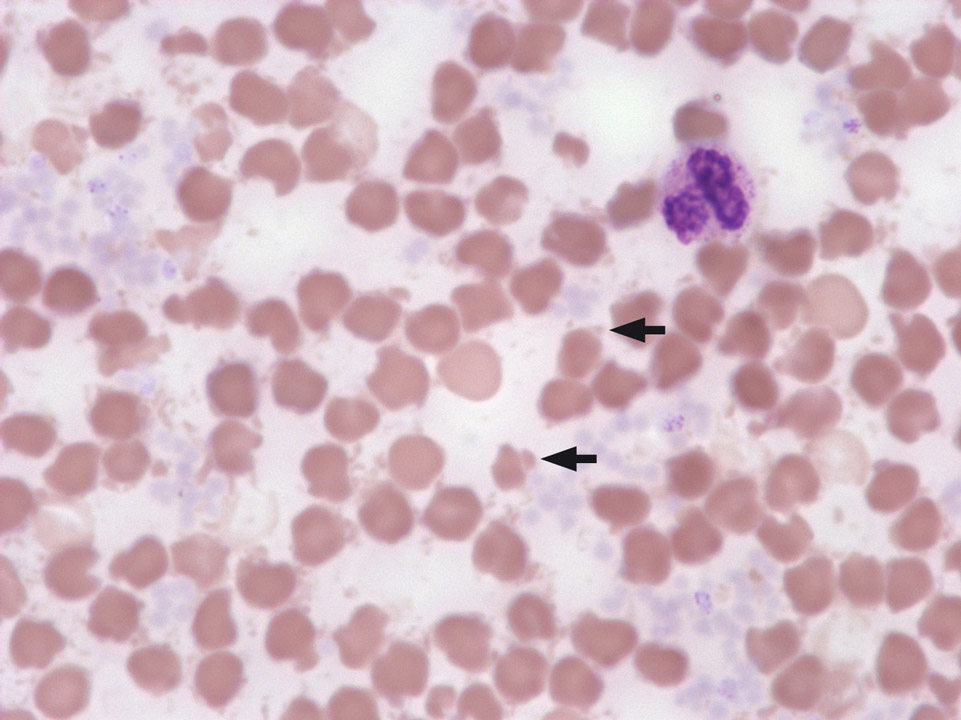
Striations with a blue cast and parts of the red blood cells broken off, due to overheating of the blood sample (storage in the car with the sun shining on it).
<p>Striations with a blue cast and parts of the red blood cells broken off, due to overheating of the blood sample (storage in the car with the sun shining on it).</p>
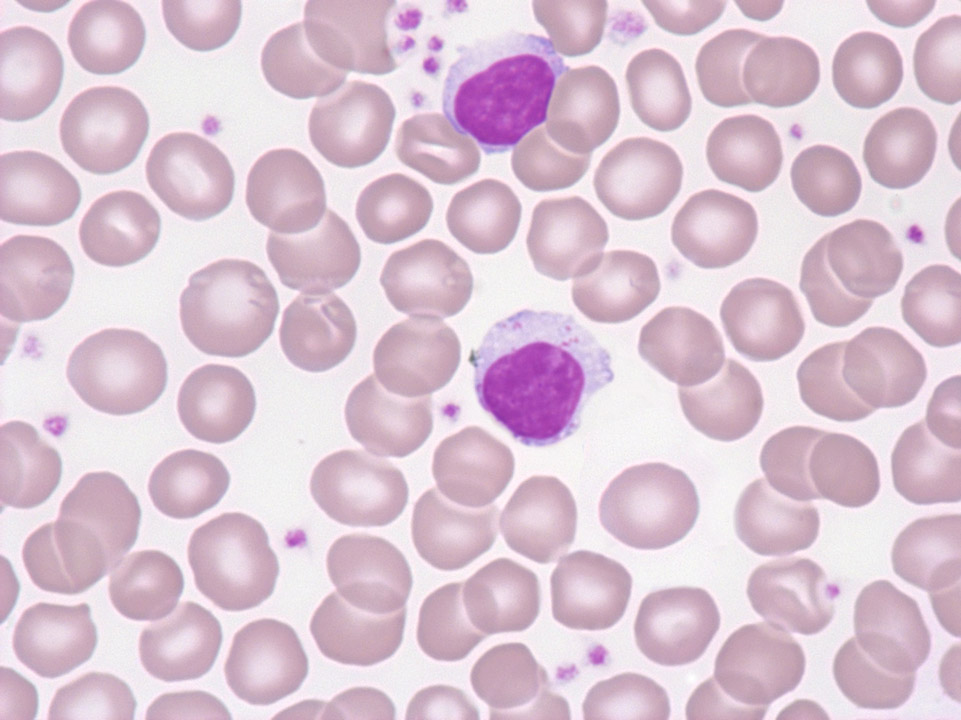
This patient still has a normal white blood cell concentration of 9,500/μL, but a severely reduced granulocyte count (5%, absolute: 425/μL). Red blood cell count and platelets are inconspicuous. Diagnosis: T-cell large granular lymphocytic (LGL) leukaemia.
<p>This patient still has a normal white blood cell concentration of 9,500/μL, but a severely reduced granulocyte count (5%, absolute: 425/μL). Red blood cell count and platelets are inconspicuous. Diagnosis: T-cell large granular lymphocytic (LGL) leukaemia.</p>
